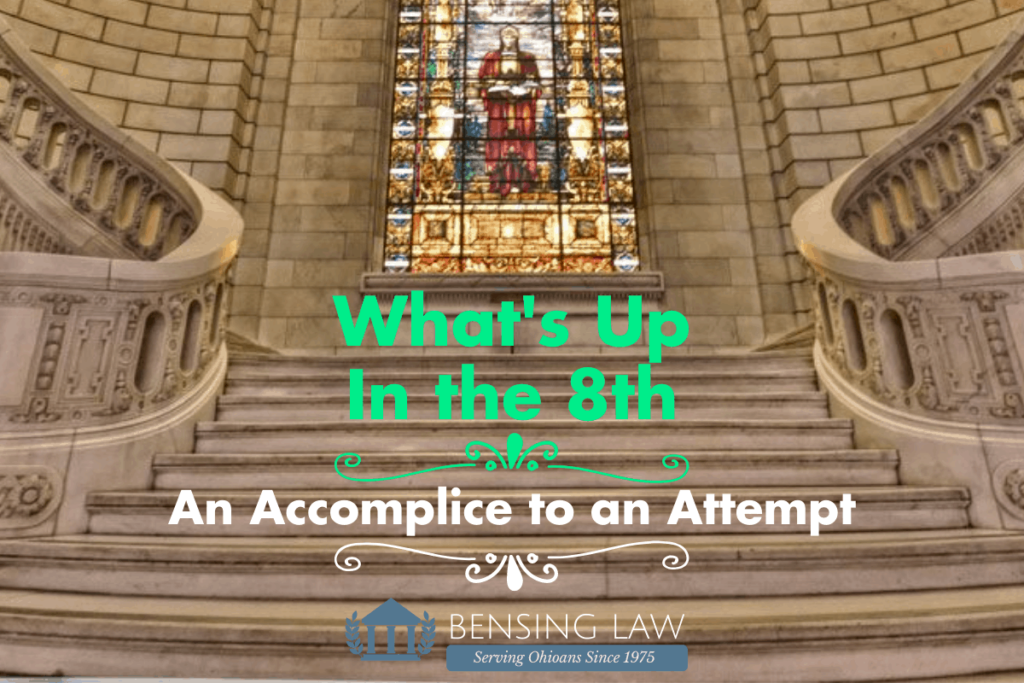
So much for Rosemond v. United States.
That was the Supreme Court case back in 2012 which heralded a new look at complicity in firearms cases. At least, I thought it did. Rosemond and his buddy went to make a drug deal, but the buyer, instead of proffering the money, grabbed the drugs, punched Rosemond’s eventual co-defendant in the face, and took off running. The co-defendant squeezed off a few shots, and that earned Rosemond a 10-year additional sentence for using a firearm in a drug crime.
Rosemond argued that the jury should have been instructed to determine whether he knew his accomplice was packing, and the Supreme Court agreed. The 8th District seemed to buy into that a few years later in State v. Shabazz (discussed here), but that turns out to have been so five minutes ago. The defendant in State v. Crosby makes the same argument, but the panel looks at the cases since Rosemond and concludes that the decision has no applicability to state law crimes, but is purely a matter of Federal statutory construction.
Accomplice Liability in Ohio
I’m not so sure I buy that; as I pointed out at the time, Kagan’s opinion eschewed statutory analysis, exploring at length the common law on complicity. The discussion of Rosemond may not even have been necessary; there’s abundant evidence that Crosby knew his co-defendant was going to wax the drug dealer Crosby had set up.
Ohio Merging Offenses Laws
Another thing that’s so five minutes ago is the Ohio Supreme Court’s 2010 decision in State v. Brown, which held that two offenses merged if they were committed with the same conduct. That decision got treated badly in State v. Ruff, and was unceremoniously dumped in a ditch and buried in an unmarked grave in State v. Earley. And so we come to last week’s decision in State v. Scott, where Scott learns to his chagrin that shooting at someone in a house will support a conviction for both felonious assault and discharging a firearm into a habitation.
Ruff and Earley basically hold that in determining whether offenses are allied, one has to look at whether they are of dissimilar import, rather than just whether they are of similar import, and whether they punish separate harms. I’ve been unsparing in my criticism of them (here and here), but astonishingly, the courts don’t care what I have to say about that, either.
Attempted Felony Murder
The 8th’s decision in a couple weeks ago in State v. Johnson raises the question of why they bother publishing Ohio Supreme Court decisions. Johnson torches a house, but the occupant survives; still enough to earn Johnson convictions for aggravated arson and attempted felony murder.
Everyone – the grand jury prosecutor, the trial prosecutor, the defense attorney, and the appellate attorneys – is blithely unaware of the fact that four years ago, in State v. Nolan, the Supreme Court held that there was no such thing as attempted felony murder. Felony murder requires only an intent to commit the underlying felony, not to cause the death; the death can be completely unintended. The attempt statute, though, requires a specific intent to cause the result. You can’t intend to cause an unintended death.
Fortunately, the 8th apparently has some people who occasionally crack a law book, and the panel sua sponte vacates Johnson’s conviction for attempted felony murder.
What is an Unavailable Witness?
A few weeks back in State v. Kehoe, the court reversed the dismissal of a case for pre-indictment delay, because the defendant hadn’t shown that the witnesses, whose absence he claimed would be prejudicial, were actually unavailable. The court relied on the definition of “unavailable” in Evid.R. 804(A), which I found troublesome, since that dealt with hearsay exceptions, which didn’t seem readily applicable to pre-indictment delay cases.
To further demonstrate the powerful impact this blog has on the court’s decision-making, it arrives at the exact same result in State v. Walker, albeit without the excursion into the hearsay rules. One might quibble with the result, but here’s the money quote:
A defendant’s bald assertion that witnesses are unavailable because they cannot be found is not sufficient to establish the unavailability of the witnesses. There must be some explanation of the efforts the defendant made to find them.
Free Speech in Government Buildings
Charles Turner is apparently no fan of South Euclid Mayor Georgine Welo. On one occasion, Turner held up a sign in the city hall parking lot proclaiming, “Mayor Welo Supports Brutality by Police Chief.” A few days later, he walked into city hall with a placard containing the same message.
South Euclid, it seems, has an ordinance which prohibits the conduct of any protest or demonstration, or the carrying of any sign, in city hall without first acquiring the approval of the mayor or the city safety director. (It turns out that they are one and the same.) Turner didn’t do so, and his actions resulted in two charges of criminal trespass. The municipal court promptly tossed the case as a violation of Turner’s First Amendment rights, and the city appealed.
My elfin friend John Martin handled the appeal, and we discussed the case, agreeing that if someone can walk into a courthouse with a sign saying “Fuck the Draft,” as the Supreme Court declared back in 1971 in Cohen v. California, surely one could walk into South Euclid city hall with a sign bemoaning the mayor’s alleged indifference to police brutality. John looked forward to the upcoming oral argument, and I could easily imagine his outraged countenance, as he stabbed his short, stubby fingers into the air for emphasis.
Turns out it didn’t quite go that way. The panel roasted him, and just a few weeks later came out with its decision, holding that the lower court’s ruling was premature. Criminal trespass requires proof that the defendant lacked privilege to be on the premises, and that was a factual question which could not be determined without trial.
There’s something to that. The trial lawyer claimed only that the ordinance was unconstitutional “as applied” (although the municipal court held that it was unconstitutional on its face as well), and perhaps a better way of resolving the case would have been through stipulated facts and briefing.
But I checked, and it seems that the First Amendment hasn’t been modified since 1971. I’m trying to imagine a set of facts which would permit Turner’s conviction, and I’m drawing a blank.


